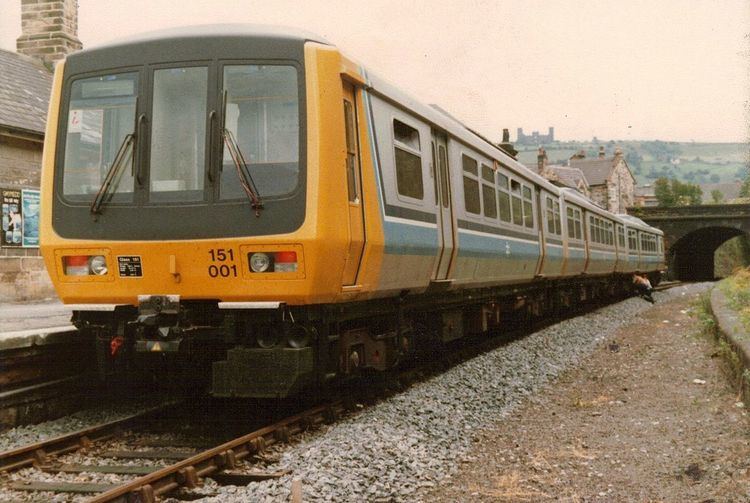In service 1985–1989 Constructed 1985 Scrapped 2004 | Manufacturer Metro Cammell Entered service 1985 | |
 | ||
Order no. 30987 (DMSL)
30988 (DMS)
30989 (MS) | ||
The British Rail Class 151 was a prototype class of DMU built by Metro Cammell in the mid-1980s. Only two 3-car units were built and they were introduced into service in the spring and summer of 1985.
Contents
Specification
The vehicles were aluminum bodied and each one was equipped with Cummins NT855 285 hp (213 kW) diesel engines with hot-shift Twin Disc transmissions and Gmeinder final drives. Their maximum speed was 75 mph (120 km/h) and their light weight meant good acceleration. The Class 151 vehicles looks strikingly similar to those used on the Tyne and Wear Metro, also built by Metro Cammell, five years previously.
Problems
The gearboxes would prove to be troublesome, giving jerky shifts and sending violent shocks throughout the train. Problems were never fully rectified until a modified version of the transmission appeared some years later on the Class 154, however interest in the Class 151 or hot-shift gearbox had disappeared by then.
Features
The units had one or two other unusual features including hydraulically driven alternators and cooling fans. The main cooler group and radiators were fitted in a pod on the roof of each vehicle. The bogies were non-standard and this combined with several other unique features led ultimately to their withdrawal in 1989. There were proposals to fit standard Class 150 bogies, however this proved to be impractical.
Withdrawal
The production contract was awarded to the BREL-built Class 150. After withdrawal the units were stored at Llandudno Junction carriage sheds until they were purchased by Railtest (later Serco Railtest) who had planned to convert them into test units. However, for the same reasons which saw their withdrawal from service, Railtest did not go ahead with any conversions and the units were again stored out in the open in the sidings of the Derby RTC.
In March 2000, they were bought by a company called Endeavour Rail who were planning to refurbish both units for spot hire to TOCs and they were transferred to Pete Waterman's LNWR company at Crewe, but again the proposed refurbishment did not happen and the units remained in the open next to the main line where they would remain until scrapped on site, their condition having rapidly degenerated, in part due to vandalism. The units were scrapped in 2004.
